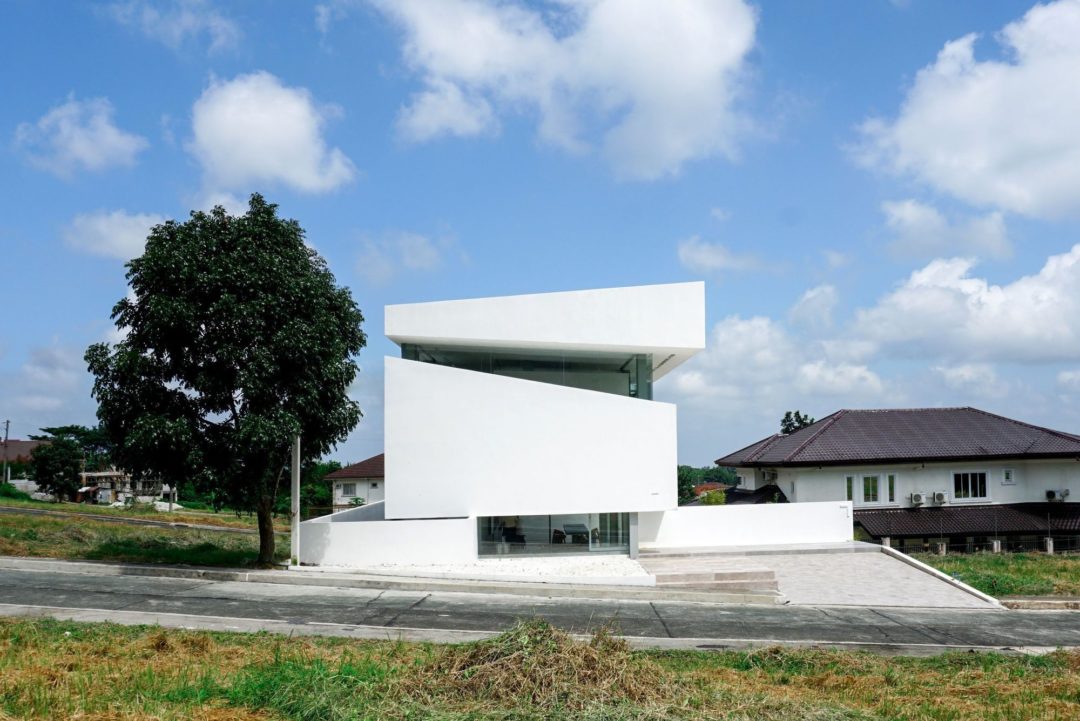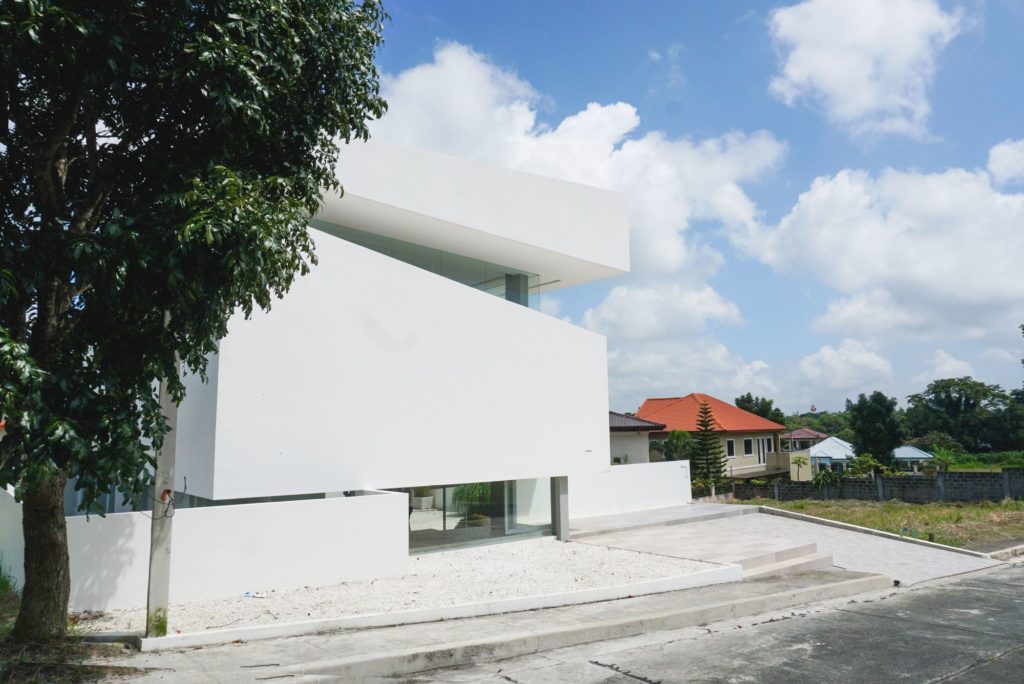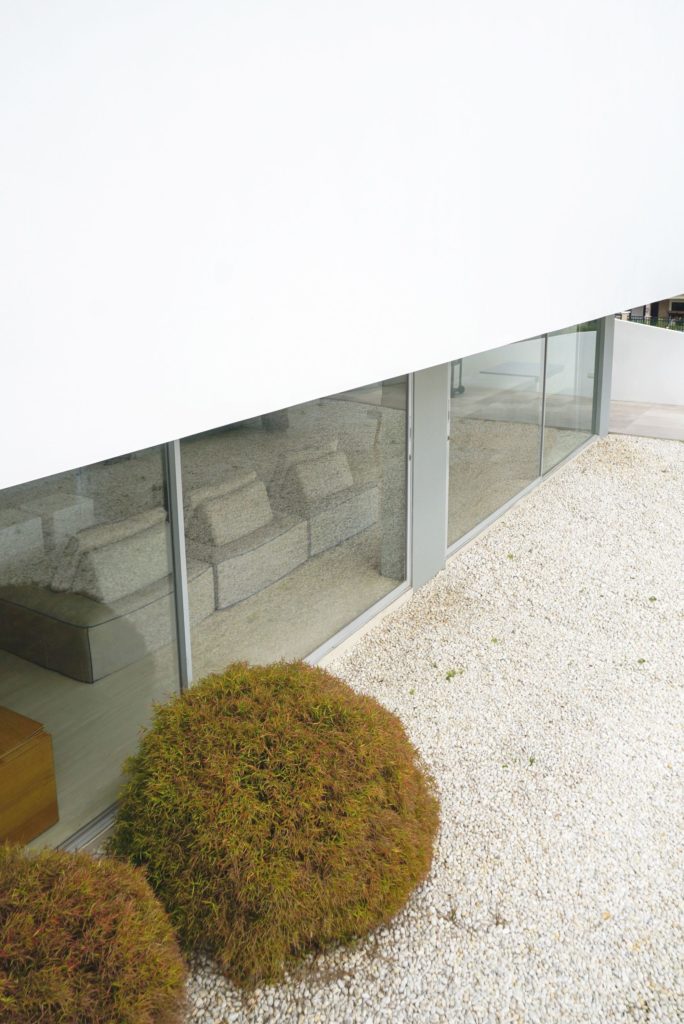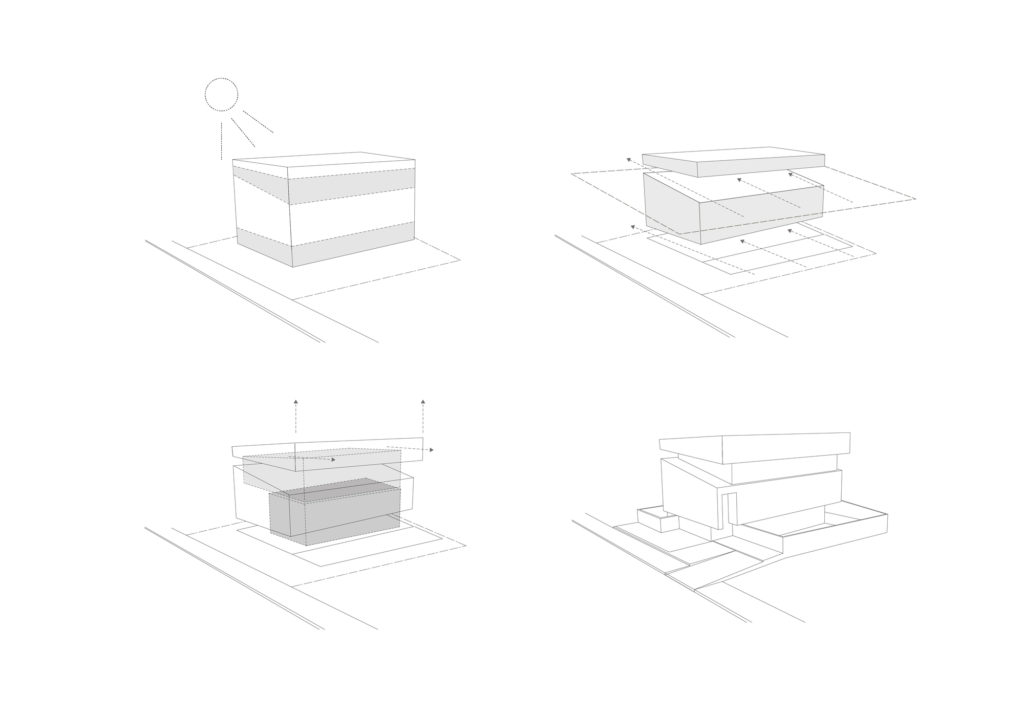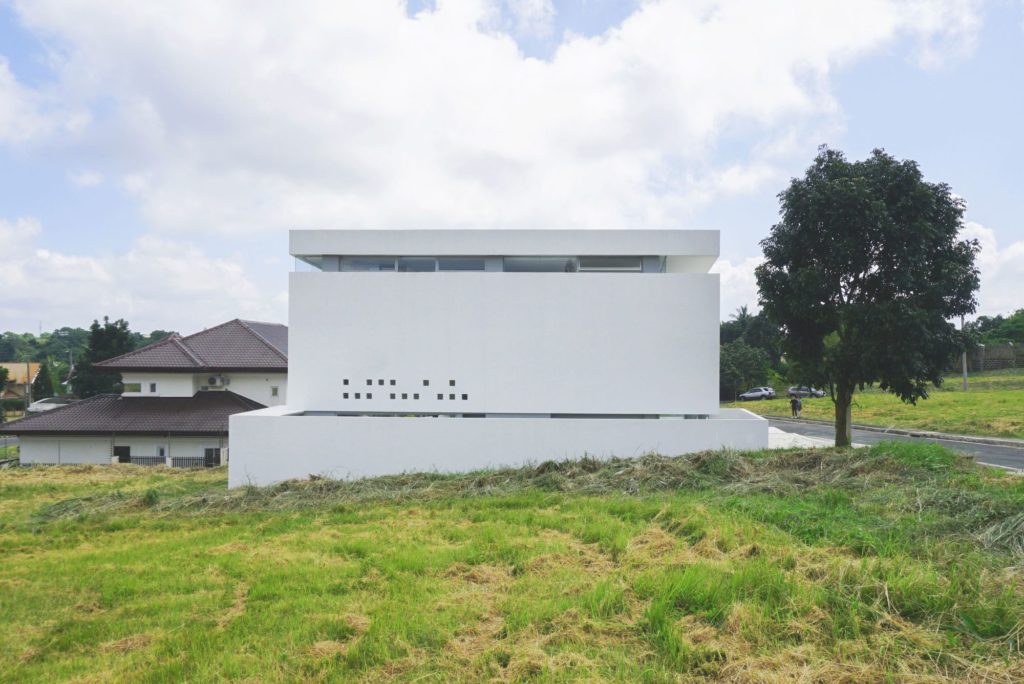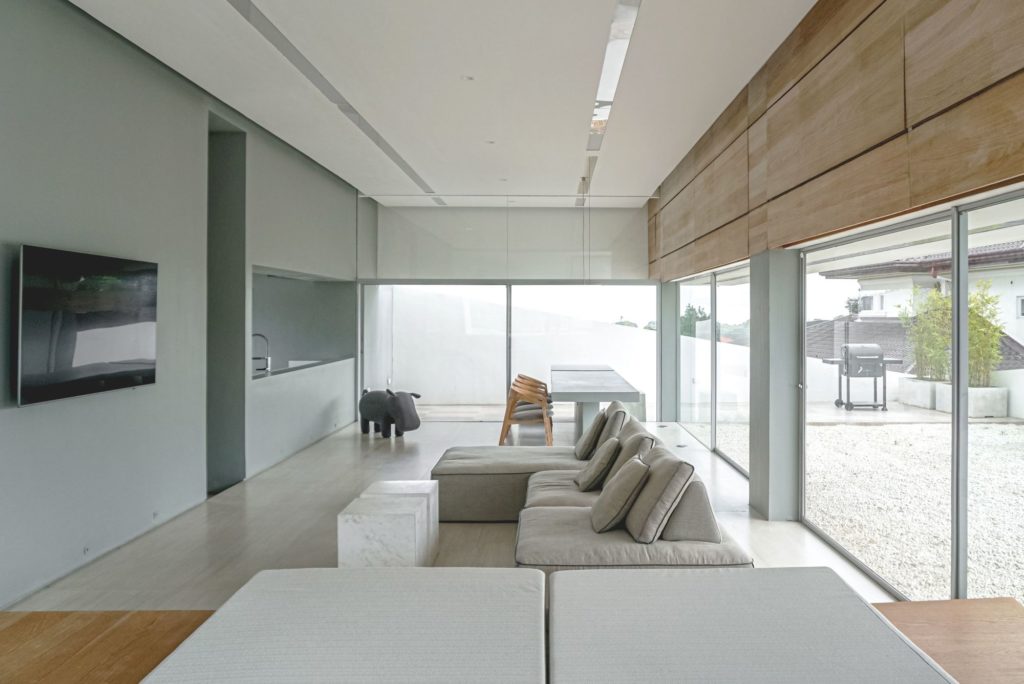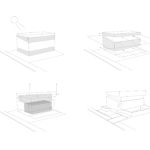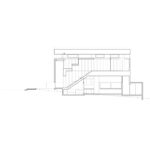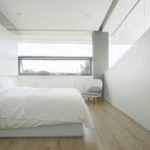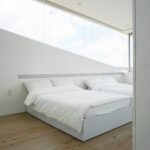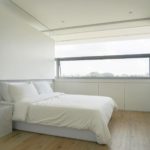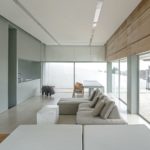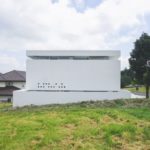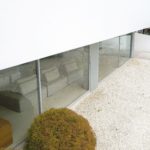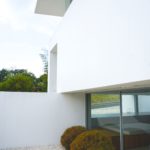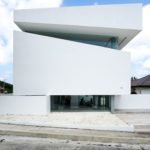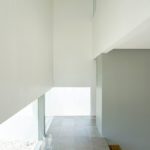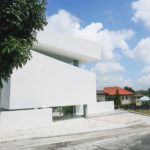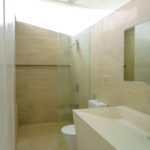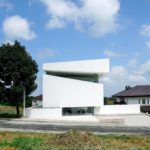Designed by Jim Caumeron of his eponymous design practice, the 100m² house sited on a 300m² plot is a weekend retreat located in Tagaytay located three hours south of capital city Manila. The client wanted a place where they can rest during the weekend to escape from the hustle and bustle of the city. The project called the Panorama House is located in a gated community of mostly Mediterranean-style homes. The client asked Caumeron to design a distinct house that stood out from its neighbours, albeit on a limited budget. There were two challenges for the project.
First, the surroundings of the house are not that different from the client’s suburban Manila house. To enjoy the scenic views of Tagaytay, Taal volcano and lake offer, one needs to drive outside of the village. The second dilemma was the restrained size of the built-up area. Caumeron calls it the panorama idea. Since there are no redeeming views in the surrounding area, other than the park across the property, the architect proposed that the house will have its own “world,” he termed it introverted context, done by isolating some outside views.
The architect imagined it as a volume with two horizontal cuts. One cut for the ground level for views, ventilation and extended space, and the second level for wind circulation and views to the outside. In the Philippines, wind circulation is crucial as it gets very hot during the summer months. The site is slightly sloping, with a 1.5 meter drop at the other end of the property line. This necessitated a sunken living and dining area 1 meter down, making the park across the lot visually-framed on eye-level. The steps that connect the entrance space to the living area was made into an afternoon nap space, a common afternoon practice for most Filipino children.
The living space expands to the garden area for breeze and view of the white-pebbled garden. The choice of using rocks instead of grass was because of daily maintenance issues. The white rocks bounce light that brighten the atmosphere. The west side of the ground floor is walled up to protect the living space from the heat of the afternoon 2pm sun between 2pm and 4pm. This is where the service areas are located. The living area also has a high ceiling allowing room for rising warm air. This space is also shielded from the warm morning with the ground floor’s deep recessed canopy.
The location of the main glass door frames a tree nearby, visible when one standing at the atrium space. The second level has a combination of horizontal and diagonal cuts that run around the structure’s envelope. One side has a bigger opening to embrace sunrise and breeze, and the west side where the sun is stronger, has smaller windows meant to pull out the air for passive cooling. The west and east windows are connected by diagonal windows on the north and south side that provide a strong profile of the cut-volume design on the facade. The ceiling slope was also meant to influence the behavior of air to cross from one side to the other.
Room partitions were limited to a certain height to accommodate clerestory windows and allow the passage of air. The master bedroom dimension was expanded by occupying some space at the stairwell. This became a play area for the client’s four-year-old` daughter. The windows of this play area look out to the stairwell that is spatially concealed allowing a wind-tunnel effect that cools down the second-floor common areas. Air can be felt when one is going up and down the stairs as the wind circulates toward the small ribbon windows of the west walls.
See the full image gallery here:
Photos: Jim Caumeron
You might also like:
Humming Tree designs Kerala holiday home using local materials, repurposed and antique objects
Vincent Callebaut unveils design for modular timber tower in Cebu City

